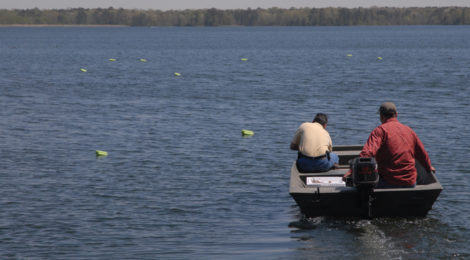
PASSIVE PERFORMANCE
Trotlines, stump poles and noodles let you look the other way and still catch fish
by Matt Williams
Jason Barber is a burly guy who has a crafty way with heavyweight catfish. Year-in and year-out the 42-year-old fishing guide from Gun Barrel City probably catches as many big blue and channel catfish on rod and reel from Cedar Creek Lake as any angler around.
Barber comes by his love for catching whiskered fish naturally. He was raised along the shores of the 33,000-acre impoundment by his grandparents. His late-grandfather, Lee Roy, was an avid cat fisherman who loved running trotlines and probably loved eating catfish even more.
To hear Barber tell it, his grandfather knew the lake like a road map and always made a point to keep the maximum number of hooks in the water that was allowed by state law.
I’m not sure what the law was back when Barber was growing up, but today’s anglers are allowed to have no more than a 100 hooks in the water at the same on all fishing devices combined.
“He had trotlines tagged with his name, my grandmother’s name, my name and my sister’s name,” Barber chuckled. “We used to spend hours running those lines. He was pretty serious about it and he caught a lot of catfish.”
For those who may not know, a trotline is a multi-hook set-up usually strung between two stumps or bushes. It typically consists of a main line made from heavy-duty tarred nylon with strong hook stagings that should be secured no closer than three feet apart to comply with state law.
The hooks should be equally strong in order to hold large fish. Most anglers prefer stainless steel circle hooks for durability and hooking efficiency.







